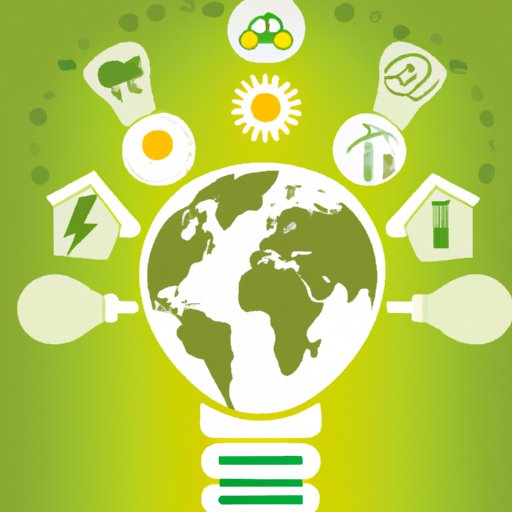Introduction
Green technology, also known as “clean technology” or “environmentally friendly technology,” is a term used to describe any technology that has minimal negative impact on the environment. It includes renewable energy sources, energy-efficiency measures, waste management and recycling, pollution reduction methods, and sustainable building practices. Green technology is becoming increasingly popular due to its potential to reduce costs, create jobs, and improve the environment.

Choosing the Right Green Technology
When selecting appropriate green technology solutions, there are several factors that must be taken into consideration. First, it is important to evaluate the environmental impacts of a particular technology. For example, renewable energy sources such as solar and wind power can reduce greenhouse gas emissions, while energy-efficiency measures such as insulation and efficient appliances can reduce energy consumption. Additionally, it is important to consider the cost-effectiveness of a technology. Many green technologies require a higher upfront investment than traditional technologies, but can result in long-term savings in energy costs and other expenses.

Case Studies of Successful Green Technology Solutions
There are numerous examples of companies who have successfully implemented green technology solutions. In 2010, for instance, Wal-Mart committed to reducing its carbon footprint by 20 million metric tons by 2020. To achieve this goal, the company installed solar panels on store rooftops, upgraded lighting and refrigeration systems, and improved transportation logistics. The results of these efforts have been impressive: Wal-Mart reported a reduction of over 13 million metric tons of carbon dioxide emissions between 2005 and 2015.
Another example of a successful green technology solution is Google’s commitment to powering its operations with 100% renewable energy. Since 2012, the company has invested heavily in renewable energy projects, including wind and solar farms, and now purchases enough renewable energy to cover all of its electricity needs. This effort has not only helped reduce Google’s environmental footprint, but has also created thousands of jobs in the renewable energy industry.

Technologies That Help Reduce Pollution
Renewable energy sources such as solar, wind, and hydropower are becoming increasingly popular as a way to reduce air pollution and greenhouse gas emissions. In addition to providing clean energy, these technologies can also help reduce water pollution and soil contamination. Additionally, technologies such as waste-to-energy plants, wastewater treatment systems, and industrial gas scrubbers can help reduce the amount of pollutants released into the atmosphere.
Strategies for Making Buildings More Energy Efficient
Making buildings more energy efficient is one of the most effective ways to reduce energy consumption and associated costs. Lighting solutions such as LED bulbs and occupancy sensors can drastically reduce energy use in buildings. Heating and cooling systems should be regularly maintained and updated to ensure optimal efficiency. Additionally, water conservation measures such as low-flow fixtures and rainwater harvesting can help reduce water usage.
The Economic Impact of Green Technology
Investing in green technology can have a significant economic impact. According to a study by the U.S. Department of Energy, the implementation of energy efficiency measures could save businesses up to $2 trillion in energy costs over the next 25 years. Additionally, investments in green technology can create new job opportunities in industries such as renewable energy and energy-efficiency consulting.
Conclusion
Green technology offers numerous benefits, including reduced energy costs, job creation, and pollution reduction. When selecting green technology solutions, it is important to consider both environmental and economic factors. There are numerous examples of successful green technology solutions, such as Wal-Mart’s commitment to reducing its carbon footprint and Google’s move to power its operations with renewable energy. Investing in green technology can have a significant economic impact, resulting in cost savings and job creation.
(Note: Is this article not meeting your expectations? Do you have knowledge or insights to share? Unlock new opportunities and expand your reach by joining our authors team. Click Registration to join us and share your expertise with our readers.)
